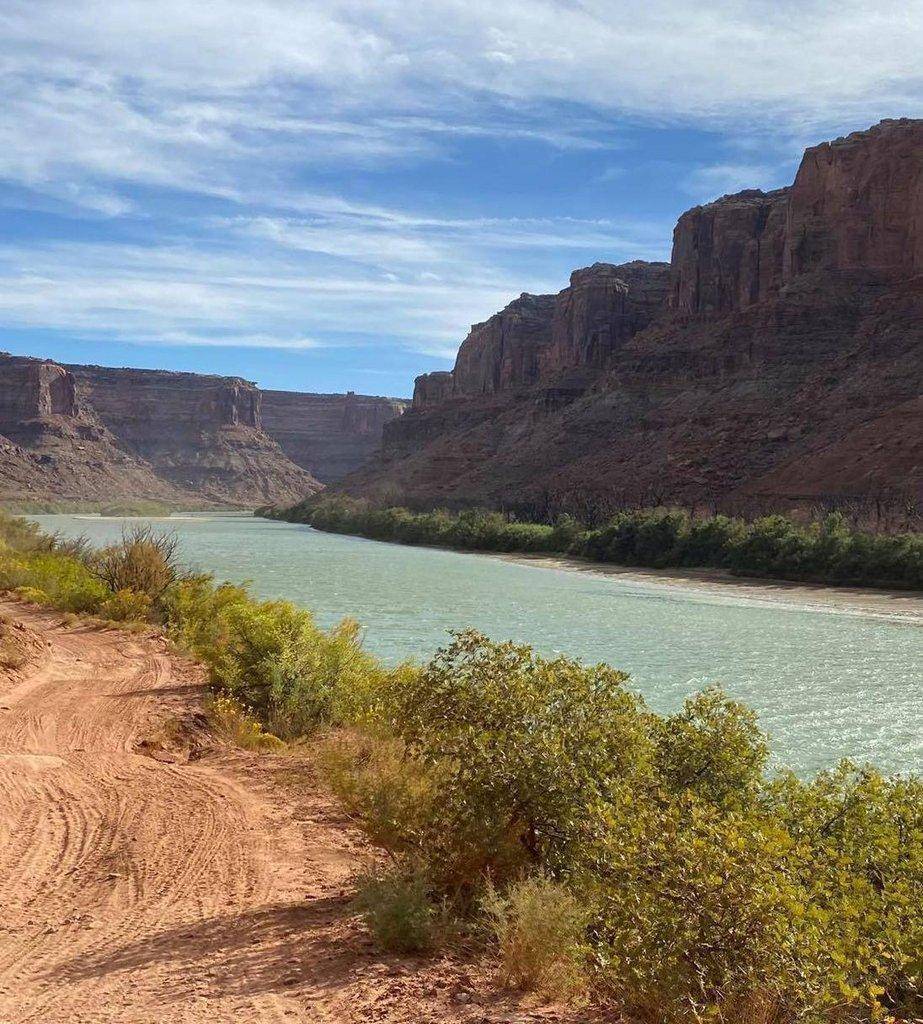Labyrinth Canyon. Photo by Jamie Swank.
By Julie Johansen
Pure Helium and Twin Bridges Resources will begin drilling this week in Labyrinth Canyon in Emery County despite an emergency injunction filed by the Southern Utah Wilderness Alliance (SUWA). Federal Judge Ruldoph Contreras ruled that the exploratory drilling in that area could continue due to the fact that the benefits outweigh the environmental impacts claimed by SUWA.
The lease to begin drilling in this area was granted by the Bureau of Land Management (BLM) about two years ago and outlines measures to ensure that the damage to the area is minimized and repair is required after project completion. However, SUWA has been vocal about its opposition to the project.
“They are going to screw up the landscape where the drill pad is located and you will see, hear and be impacted by the operations at the surface,” Steve Bloch, SUWA’s legal director, remarked. “Know this operation is going to harm the Labyrinth Canyon Wilderness and we are not done fighting it.”
These remarks were quoted by the Salt Lake Tribune on Tuesday, Jan. 13 following the court ruling. Proponents of the ruling, including Utah’s Congressional delegation, felt that the disturbance would be minimal and the benefits outweigh the claimed harm by the environmental group.
Helium is utilized for more than balloons and blimps. It has become necessary for use in the medical field in treatment for respiratory diseases as well as magnetic resonance imaging (MRI). Helium is also used to clean jet fuel tanks and a variety of other technological uses.
Helium is found in the wells and then pushed through a series of pipes to a refining plant. It has two grades; one for balloons and the second for medicine and technology. The lack of helium being mined, coupled with the nation’s need for it, were also reasons why Judge Contreras ruled in favor of the exploration. Helium is mined with the natural gas drilling and pushed to the surface with the gas by water pressure.
Contreras wrote in his ruling that the water required, which was part of the opponent’s objection, is minimal, amounting to 0.002% of total water use in Emery County. It would also not deplete any surface water or aquifers, but would come from existing municipal water rights.
The Bowknot project utilizes 5.5 acres of land, all of which is outside of the wilderness designated areas and has the potential to generate up to $150 million in royalties for the Utah School and Institutional Trust Lands Administration, which will benefit Utah Schools and education. The site could eventually house seven wells and gases would be piped to a processing plant outside the wilderness area. Opponents argue that it is on a cherry stemmed road that runs into the wilderness area.
Additionally, an endangered bird species lives in that area, making it so that drilling is only allowed during certain months of the year, not from March to September. During this time, the company can analyze the findings of the drilling.
Bloch stated that SUWA will continue with its lawsuit on an expedited schedule so that it can be resolved before drilling is scheduled to resume in September.

